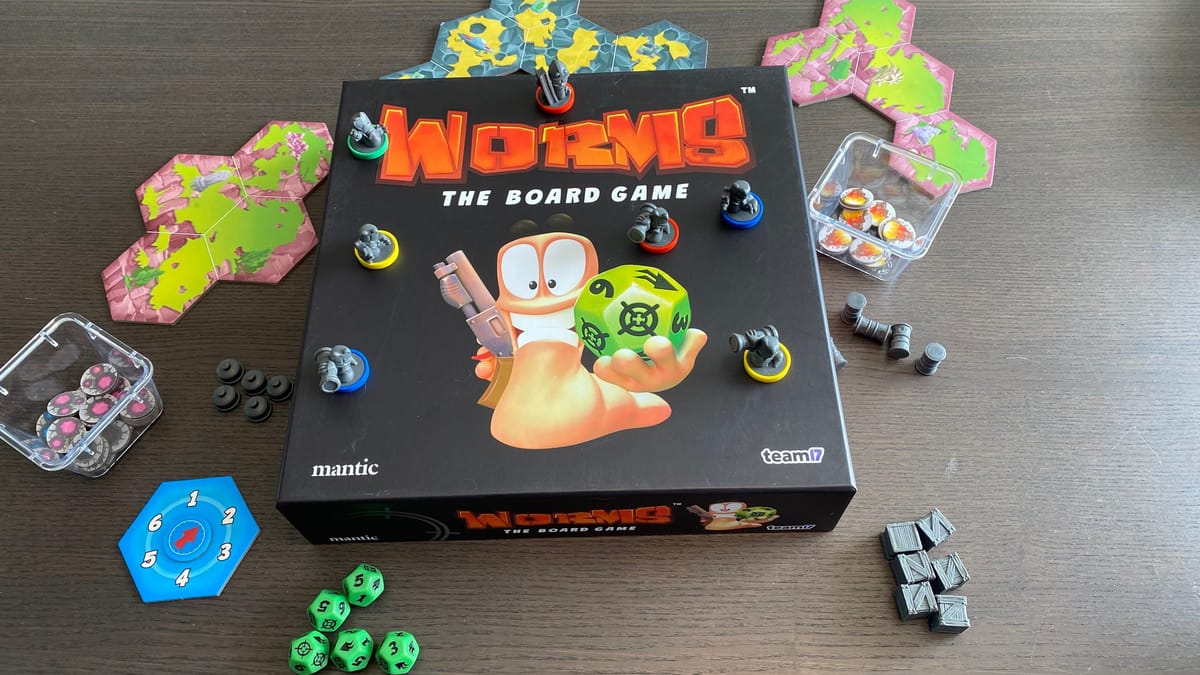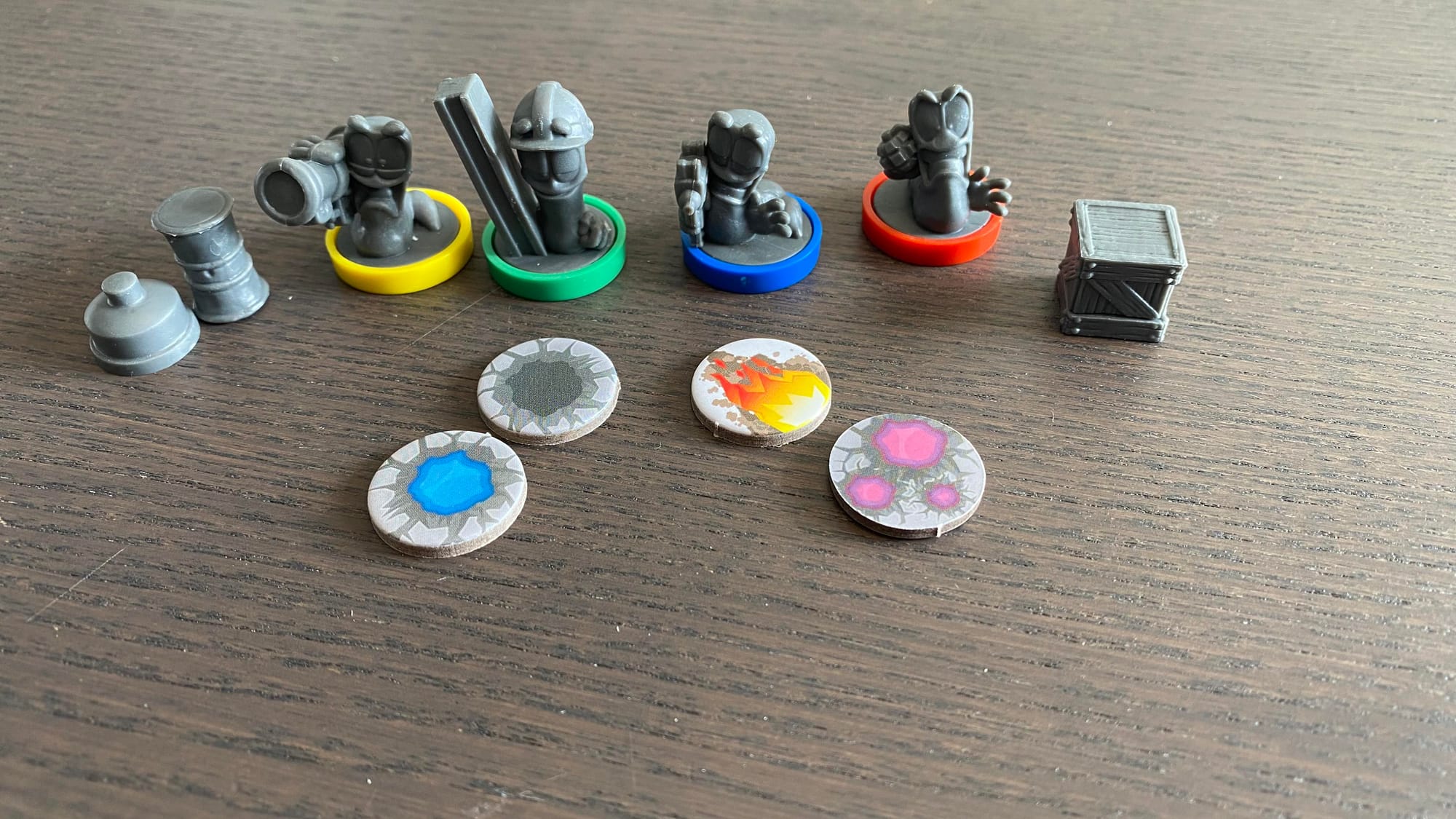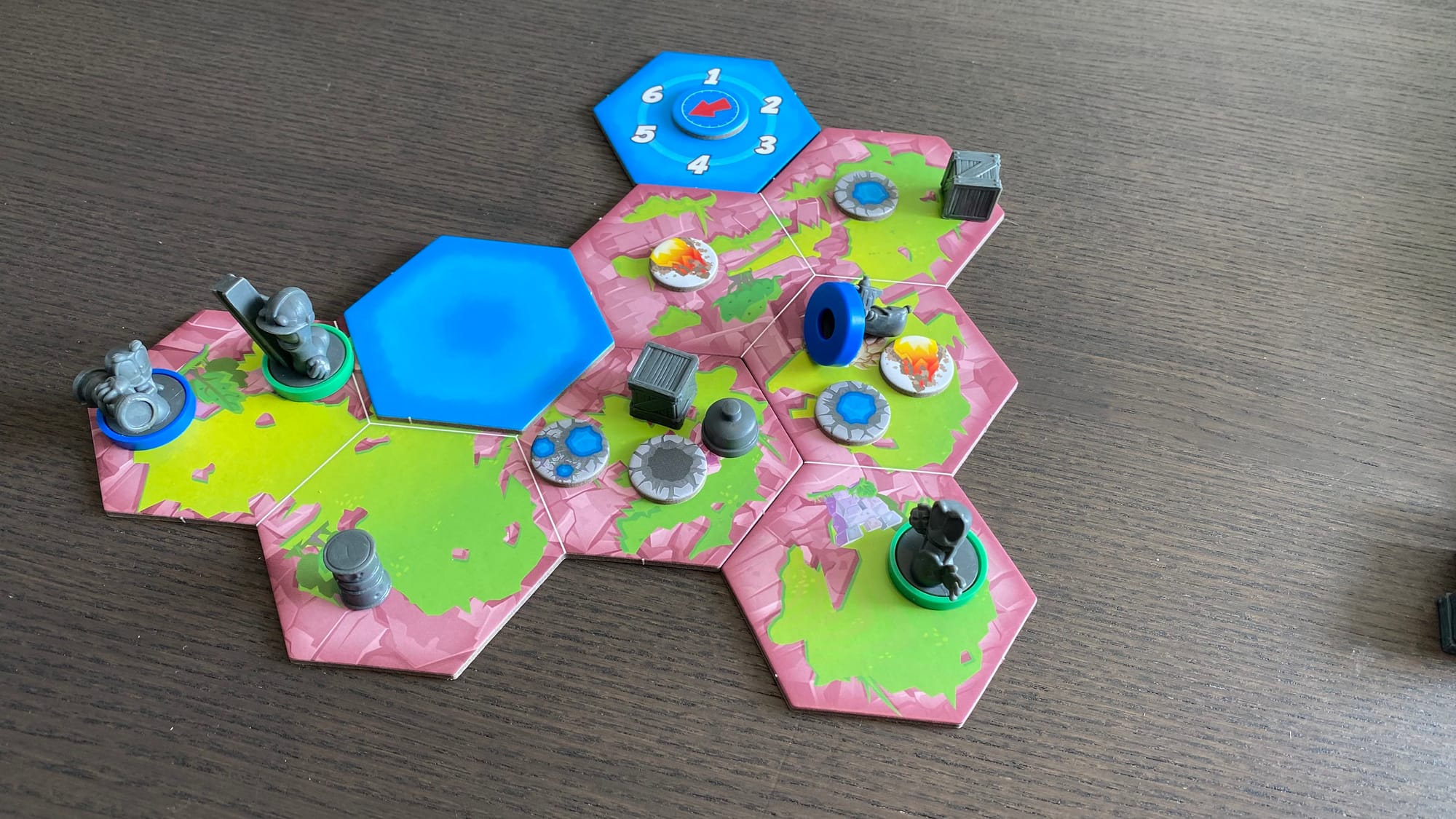
Admittedly, I never played Worms very much when I was younger. But growing up, I did play a whole gamut of flash game knock-offs both alone and with my younger siblings. Back when “stick figures” were the craze, my brothers and I sunk hours into blowing each other up in a Worms-like called Territory Wars. Even though my memories lack a bit of worminess, this release gave me some hope that I might be able to enjoy some nostalgia in a new form. My biggest concern going into this was how it would handle the actual attacks, since Worms—and its knock-offs—all involved some minigame of technical skill to handle attacking your opponents. Faithfully adapting this mechanically would likely bog the game down but luckily, the designers opted for a more thematic approach to bring the video game to your table. The end product is a fast-paced, chaotic game of mayhem.
Components and Rules
Worms includes four different sculpts for you to blow off the map, though there’s no gameplay differences between them, as well as 3D objects for the crates, barrels, and mines. The models all capture the cartoonish animation of the original game faithfully and would all look even nicer if I ever get around to painting them. Unfortunately, the Girder-weilding models have bases that are slightly too small for the player-color rings, causing them to fall off whenever the unit is picked up by the model.

All the cardboard components have a nice chunky thickness, which I really enjoy. Too many games—even high-profile ones—skimp on their cardboard quality, but even the fire and crater tokens have enough meat on them that I never have to worry about accidentally damaging them.
For the most part, the rules are cleanly written and easy to understand. There’s even references on the back which I greatly appreciate. The one part I took issue with was the section on how Accuracy works. Accuracy is used to determine how many dice you roll when making an attack, as well as the results, so the concept is essential to gameplay. Yet the wording is much more convoluted than it needed to be. There are far more elegant ways to explain the mechanic, even assuming the players have never played a similar game before. The rule isn’t too difficult to understand, more just baffling why this is the wording the writers went with.
Gameplay
As I mentioned in the intro, Worms' gameplay is fast and chaotic. But first, players need to create the board as a group. Everyone takes turns placing the tiles, then adding elements to the board, including the worms themselves. This is before player colors are randomly dealt so most players would try and make things as even as possible. It may seem like something that could take too long to be worth the effort, but I found that in practice the board is set up fairly quickly and never the same.
A single turn is very simple. After having the chance to move a bit, players can use one of the varied weapon cards they’ve drawn before ending their turn and placing more objects onto the board. Some weapons are more accurate than others, some leave larger trails of destruction, and some can’t even deal direct damage. But they all have their uses and I’ve never felt let down by the random draw.
My favorite experience so far was actually with a weapon that couldn’t target a worm. It was the very first turn of the game and the player shot a mine, causing it to explode… which detonated the oil barrel in the same hex, which spread fire to several surrounding hexes that also had barrels and/or mines. Once everything was resolved, two worms were wounded and three were dead. An explosive start to the game!

Another thing I mentioned in the intro was how the developers took a more thematic approach to firing weapons. Rather than setting the angle and power of an attack, players just roll dice based on the weapon’s Accuracy to determine if they veer off target. Each result corresponds to either a direction or a direct hit for the player to choose from. This keeps play moving along while retaining a bit of the positioning skill and general chaos from the original video game.
Player elimination is fine as a game’s goal, but it can be annoying when someone is forced to sit and wait for several other people to be eliminated before the game is over and another game can start. In Worms: The Board Game, a single player’s elimination marks the end of the game instead. The other players play through that round and one more, then the player with the most worms left wins—along with a series of tiebreakers of course. If play drags on too long, an Armageddon card is drawn which hastens the deaths of everyone playing. None of the games I’ve played felt like they’ve overstayed their welcome and nobody is forced to sit out for too long.-
I’ve talked about the randomness of this game as if it were a good thing because I believe that in this case, it is. The game is short and simple enough that I don’t mind my Superweapon doing nothing of note. My opponents’ Superweapons are just as likely to fail anyway. My favorite experiences with both the source games and this adaptation are when the wholly unexpected happens. But if any aspect of that doesn’t appeal to you, then this is certainly not a game you would enjoy. While your choices feel meaningful to a degree, this game is anything but strategic.
Worms: The Board Game
Good
Worms is a fast-paced game that thrives when the players don't take it too seriously and embrace the chaos. Its explosive chain reactions can make you feel like a kid again—the component and rule issues don't keep the game from being a fun experience.
Pros
- Faithful to the video game
- Perfect game length
- Quality components
Cons
- Some models too small for rings
- Rules can be confusing
- Too random for some
This review is based on a retail copy provided by publisher.
